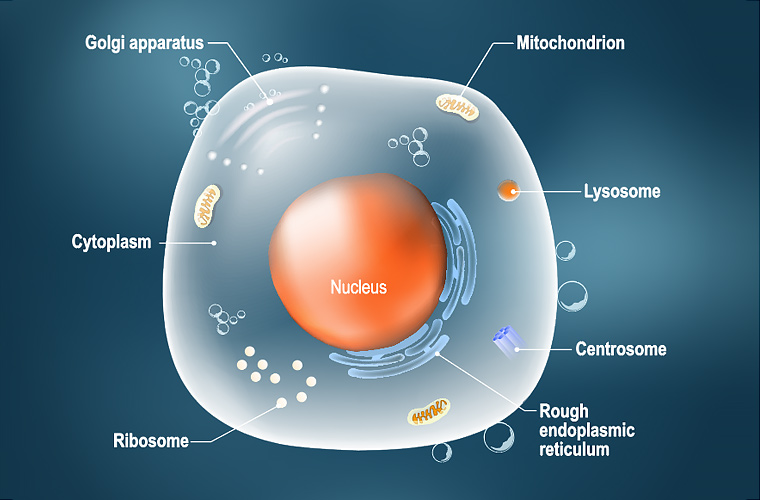News
Researchers uncover alternate theory for Alzheimer’s disease
Rather than tangles and plaques being the cause of the disease, researchers are exploring the issue of lysosomal storage.
 The researchers believe lysosomal storage is a ‘likely cause’ of Alzheimer’s disease.
The researchers believe lysosomal storage is a ‘likely cause’ of Alzheimer’s disease.
Tangles and plaques have long been at the forefront of experts’ minds when it comes to the potential cause of Alzheimer’s disease.
But new research published in ACS Central Science posits the theory that lysosomal storage may be key.
‘The dominant theory based on beta-amyloid build-up has been around for decades, and dozens of clinical trials based on that theory have been attempted, but all have failed,’ lead researcher Professor Ryan Julian said.
‘In addition to plaques, lysosomal storage is observed in brains of people who have Alzheimer’s disease.
‘Neurons – fragile cells that do not undergo cell division – are susceptible to lysosomal problems, specifically lysosomal storage, which we report is a likely cause of Alzheimer’s disease,’ he said.
Professor Dimity Pond is a GP with a special interest in aged care and dementia. She told newsGP this new theory may hold weight.
‘It’s definitely worth looking into because [researchers] have been looking at plaques and tangles for decades, without any success,’ she said.
Professor Pond said this new research may eventually help lead to a cure.
‘It could, but it’s very early days yet,’ she said.
Lysosomes, an organelle within the cell, are the ‘rubbish bins’ of cells where old proteins and lipids go to be broken down to their building blocks. Those building blocks are then sent out to the cell to build new proteins and lipids.
However, if the material that enters the lysosome cannot be degraded, those pieces cannot leave the lysosome. The cell then decides the lysosome is not working and ‘stores’ it.
If this process repeats, it results in lysosome storage.

Regarded as the ‘rubbish bins’ of cells, lysomes are where old proteins and lipids go to be broken down to their building blocks.
Professor Julian’s team postulated that long-lived proteins can undergo spontaneous modifications that make them indigestible by lysosomes.
‘Long-lived proteins become more problematic as we age and could account for the lysosomal storage seen in Alzheimer’s, an age-related disease,’ Professor Julian said.
He explained that changes occur in the fundamental structure of the amino acids that make up the protein. These changes then mean enzymes cannot latch onto the protein, and are therefore unable to break it down.
‘We show in our paper that this structural modification can happen in beta-amyloid and tau – proteins relevant to Alzheimer’s disease,’ Professor Julian said. ‘These proteins undergo this chemistry that is almost invisible, which may explain why researchers have not paid attention to it.
‘If we are correct, it would open up new avenues for treatment and prevention of this disease.’
Professor Pond believes we are many years away from basic science leading to a potential cure for Alzheimer’s disease. In the meantime, she said people must focus on the care aspect of supporting patients with dementia, as well as their families, and a key factor lies in properly identifying such diseases in the first place.
‘GPs are a bit cautious about identifying dementia because a whole lot of stuff follows from that which is not always seen to be very good for the patient, like losing their driver’s licence, and so on,’ Professor Pond said.
‘So GPs protect patients as much as possible.’
Professor Pond said dementia can also be a difficult disease to diagnose.
‘We only identify about 50% of people with dementia in the early stages,’ she said.
And yet, Professor Pond said, we cannot overlook the fact it is a growing problem.
‘Ten years ago, there were probably two or three new cases of dementia in most GP practices in a year, but now we’re looking at one a month because of population ageing,’ she said.
‘So it’s something we’re going to have to deal with.’
While research into the causative factors for Alzheimer’s disease continues, GPs can also continue to focus on appropriately caring for patients with dementia, which requires funding.
‘The basic science needs to happen, I think, in conjunction with adequate funding to explore how we can better manage dementia, and that should be subject to proper evidence-based trials,’ she said.
According to health direct, dementia is the single greatest cause of disability in Australians over the age of 65. It is the second leading cause of death in Australia, and the leading cause of death for Australian females.
Dementia Australia reported that the estimated cost of dementia to the community was more than $14 billion in 2017 alone.
Alzheimer’s disease dementia lysosomal storage plaques
newsGP weekly poll
Is it becoming more difficult to access specialist psychiatric support for patients with complex mental presentations?